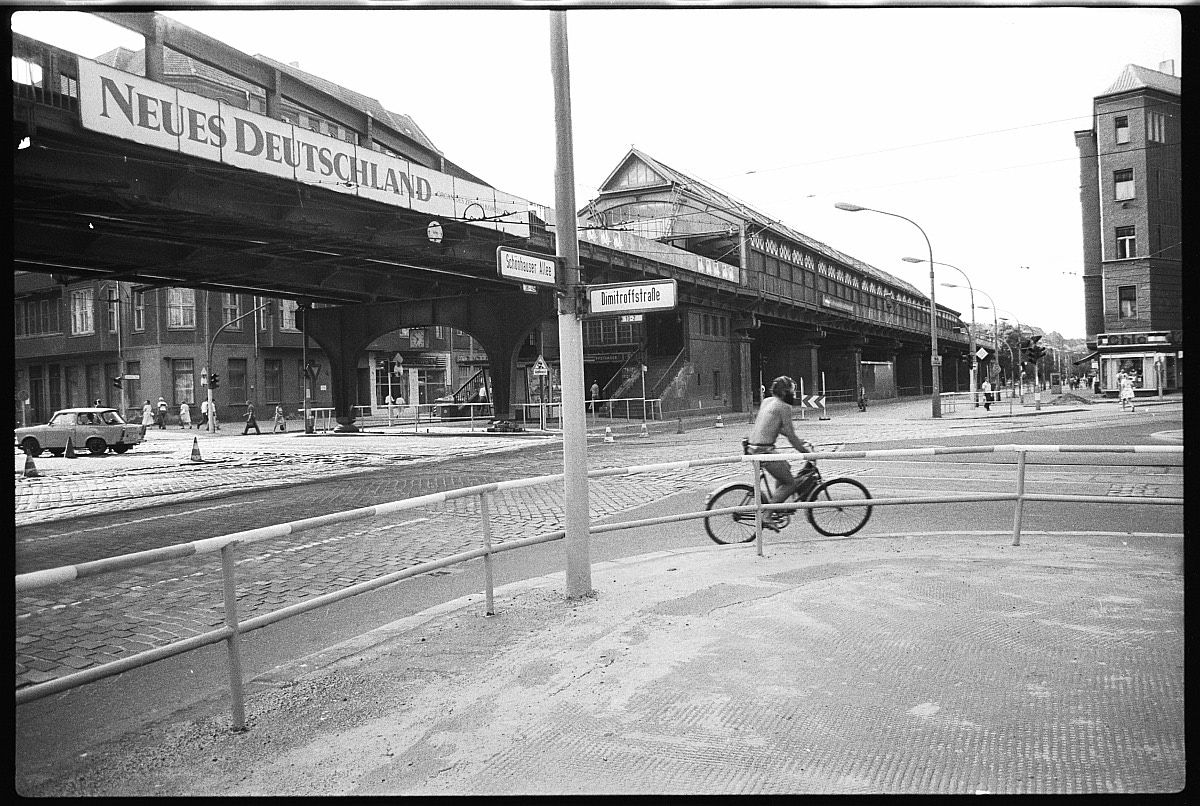Dimitroffstraße
February 7, 2021 Berlin
My office is right around the corner from Berlin’s Eberswalder Straße station, a busy elevated subway stop in the center of Prenzlauer Berg.
It’s a unique station, mainly because it’s in the middle of an intersection and you enter through a set of twin stairs. Supposedly, they were built to accommodate people coming and going at the same time, but in practice it leads to utter chaos: You walk down the stairs into oncoming crowds and get spit out on an island in the middle of the road, cars and trams on either side, the smell of French fries in the air, pigeons flapping by.
Sometime last spring, when restaurants were briefly open, we got pizza just a stone’s throw from the station: One of those Berlin restaurants serving solid but unremarkable food at impossibly cheap prices.
The most prominent feature of the restaurant? A large black and white print of the subway stop, showing a curiously different reality: The same station, then called Dimitroffstraße, completely devoid of crowds, save for one lonely pedestrian. It almost feels like he could be Mr. Dimitroff himself.
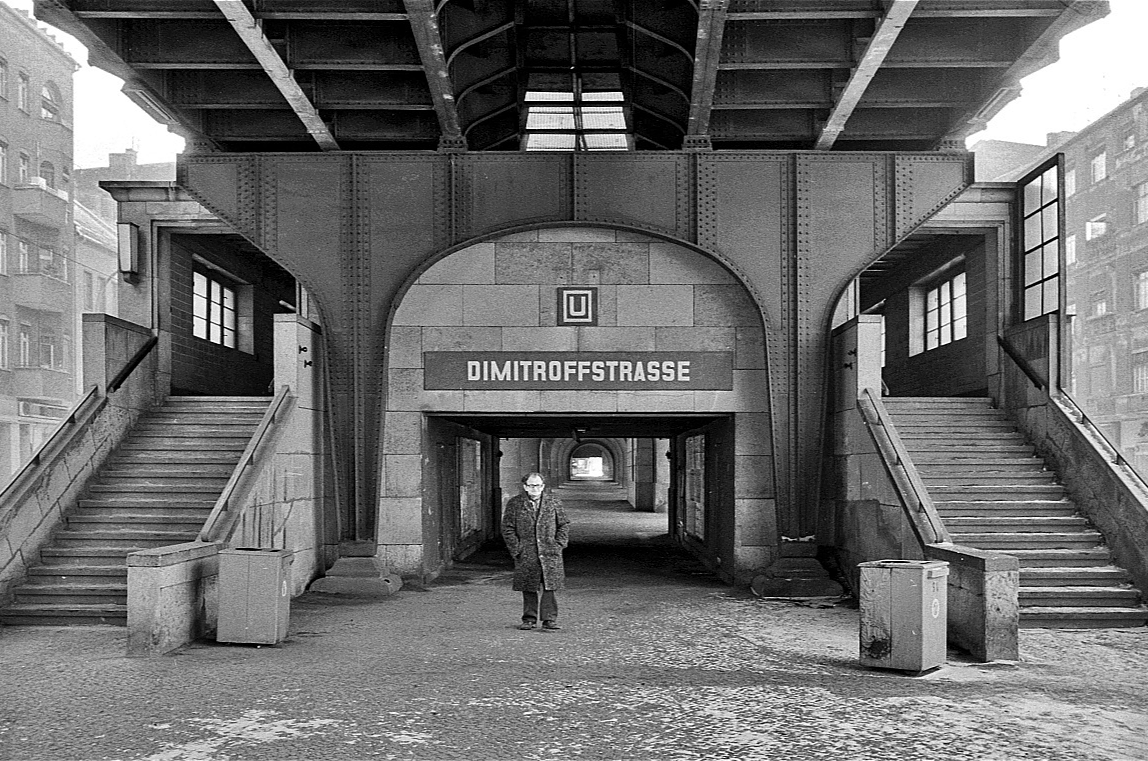
In reality, Dimitroff was Bulgaria’s first communist leader, a role immortalized in the station name until 1990. I recalled the picture recently, and went on a little hunt to find out more. Turns out the Deutsche Fotothek has a collection of images by a photographer called Gerd Danigel that show the station in its mid-1980s state.
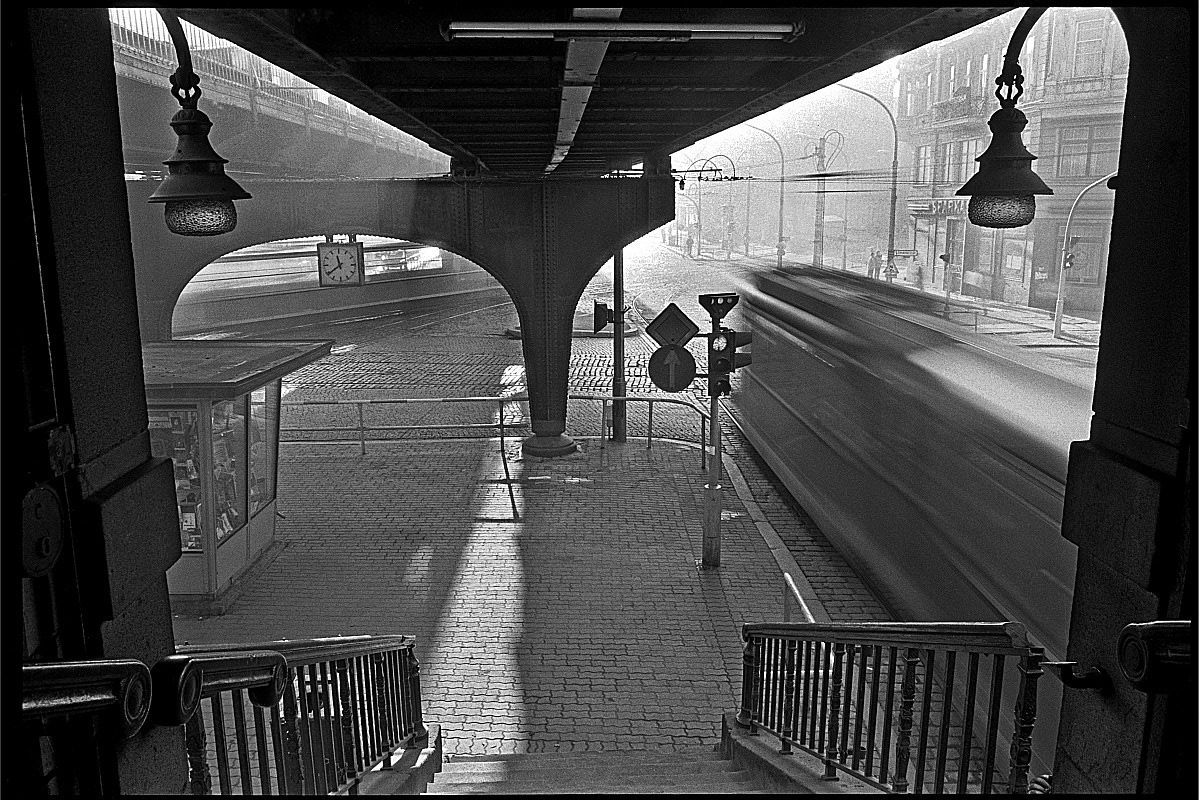
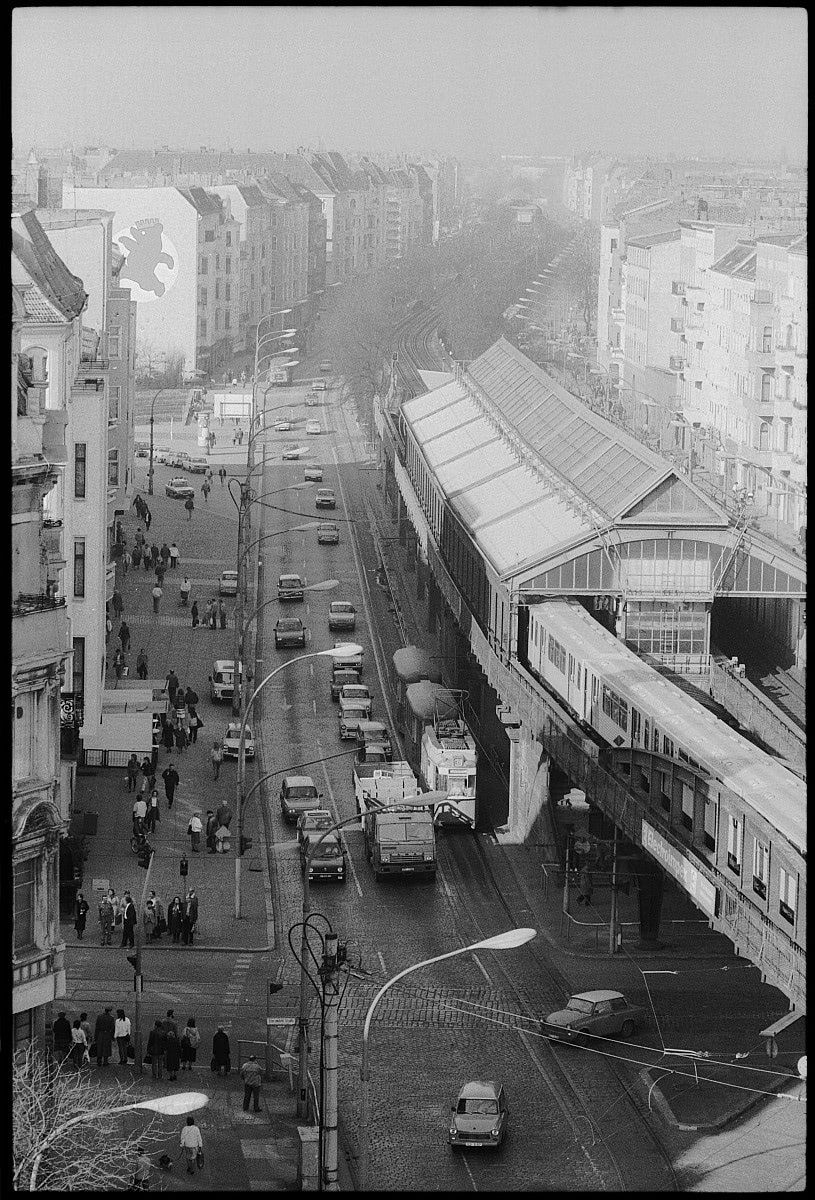
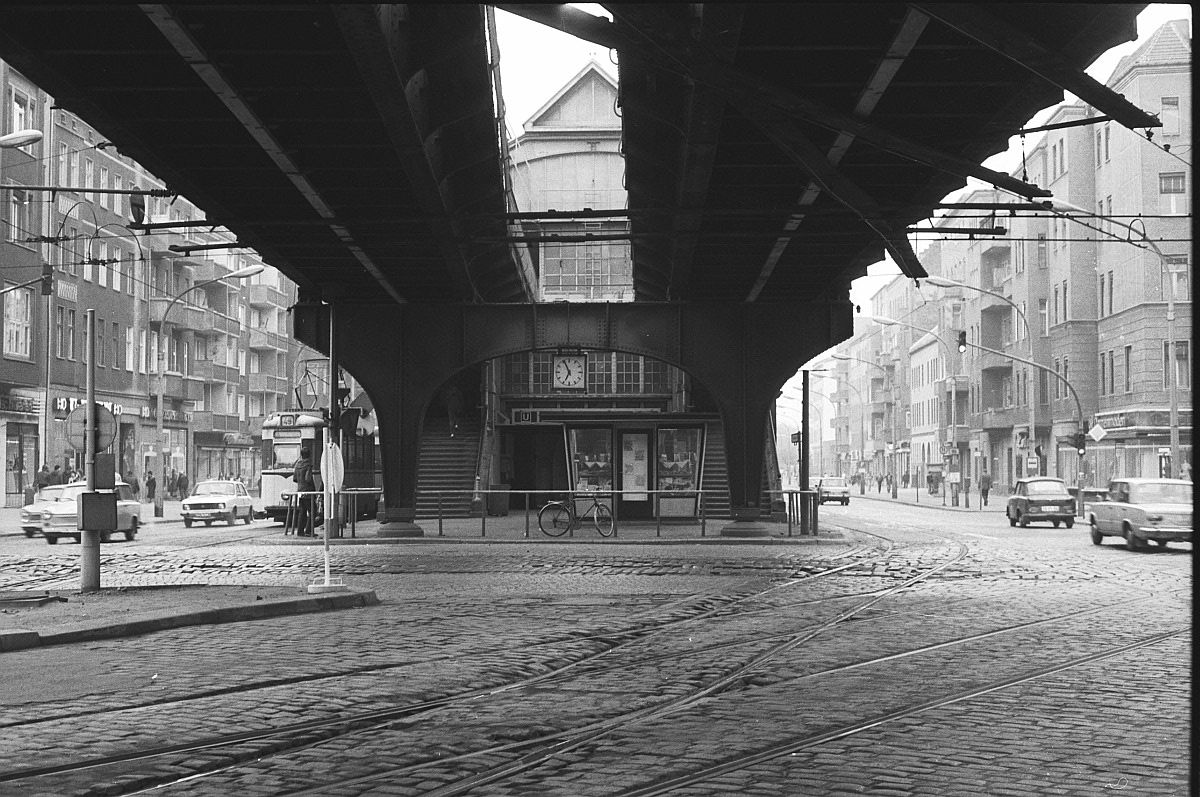
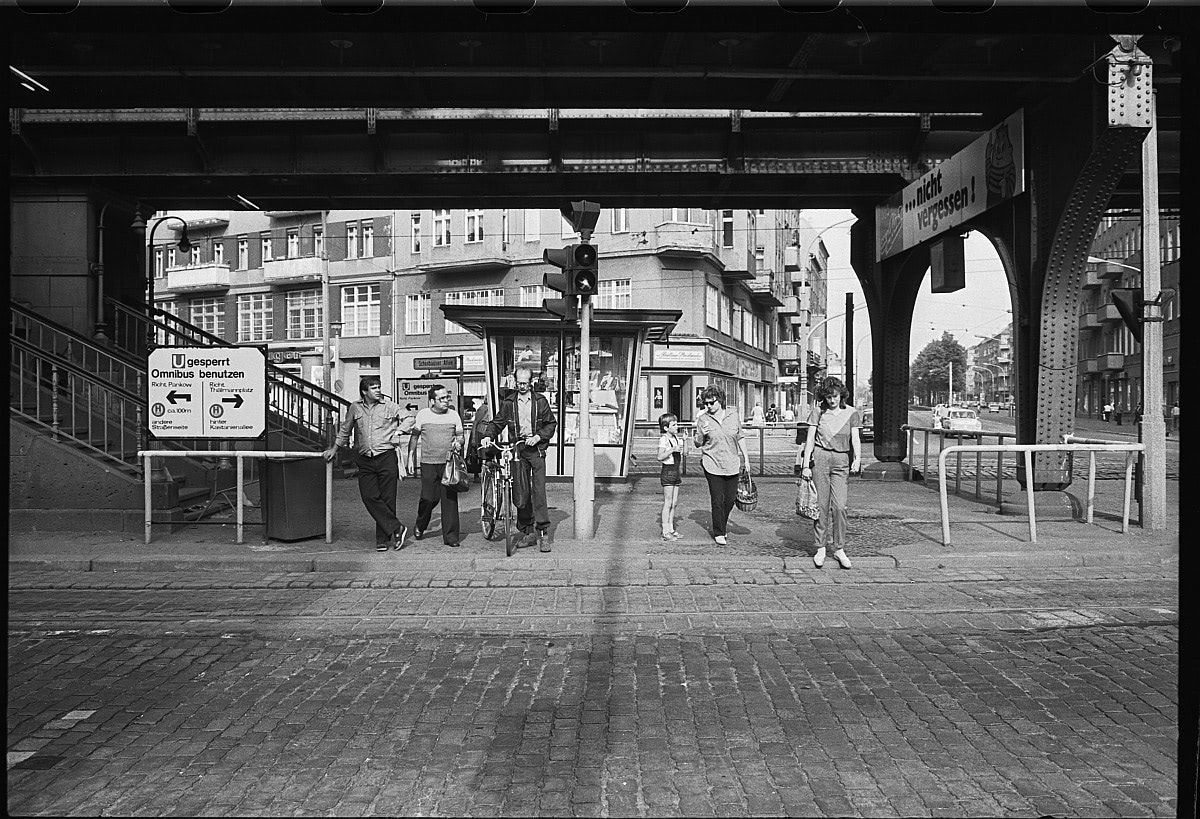
As with many pictures of the Berlin from the past, it’s hard to reconcile what we see with the reality today: Not only have the places changed, but also the context in which they existed. Pictures of East Berlin always strike me as empty and orderly, strangely reduced to their pure functionality. Perhaps I’m reading too much into these, but it appears as thought the East German regime kept things deliberately neat and sterile to maintain an illusion of control.
What makes it downright surreal is the juxtaposition of such places with the ever-present ideology. The German Federal Archive has a picture of a plaque that used to stand right by the entrance. It read:
The life of Georgy Mikhailov Dimitroff, loyal companion of Lenin and Stalin, steadfast revolutionary and anti-fascist tribune, will serve as an inspiring example to all fighters for the cause of peace and democracy, for communism.
Indeed, the only ad I can make out in the photos is the banner for the state newspaper, soberly reading just “New Germany”. It doesn’t have to try particularly hard.
